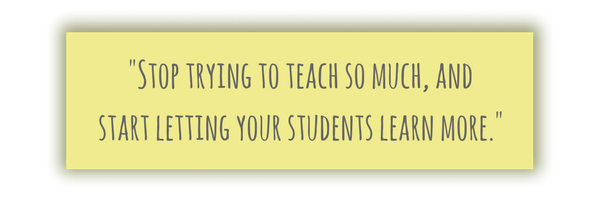
My students saw the note on the board and knew what was coming. They filed into the room like a herd of depressed cattle squeezed from the open range into confined stalls. They fired up their flashy new digital computing devices and slouched back in their seats in drab anticipation of the coming technology lesson that I had solicited as the coolest thing they might learn all year.
They did not doubt the coolness of the technology. They dreaded the dullness of the lesson. Thankfully, I am a relatively decent teacher. I recognized the tumbling affect in time to improvise a profound speech about the amazing experience I had planned, subtly infusing several persuasive techniques such as varied pitch and volume and pace and plenty of movement about the room. I accommodated my detail-oriented students by articulating the intricate complexities of the activity and encouraged the less than confident ones by assuring them of their inevitable success. By the time my elocution ceased, my students were ready for great things. And I immediately discovered that the energy I had worked so arduously to rescue was irreparably obliterated.
I am not, I believe, the only person who has ruined a good thing by talking about it too much. If only, before launching my unnecessary oration, I would have paused to consider what I would have preferred were I the student…
So here’s the message, and it is simple. Say only the most necessary things to get students started, then let them go. Sure, they will need some guidance along the way. Sure, they may get off track now and then and need to be redirected. That’s how we learn, though. Regular, ongoing feedback.
It’s annoying when students ask the same questions dozens of times during a single activity, right? They don’t do that because they aren’t listening the first time. They do that because they can’t remember all those directions and instructions once they actually dive into the activity. And even if they think they can remember them, how often do they end up remembering incorrectly and wishing they would have asked you to clarify one more time?
 Allow me to articulate this message in stronger language. Stop trying to teach so much, and start letting your students learn more. As long as the teacher is commanding the attention of the entire class (which is, as you know, unlikely at best), the students aren’t doing anything. Listening? Possibly taking notes? Those things are as close to worthless as an academic activity can be. Every other activity in which a student might engage in the classroom is more valuable and impactful.
Allow me to articulate this message in stronger language. Stop trying to teach so much, and start letting your students learn more. As long as the teacher is commanding the attention of the entire class (which is, as you know, unlikely at best), the students aren’t doing anything. Listening? Possibly taking notes? Those things are as close to worthless as an academic activity can be. Every other activity in which a student might engage in the classroom is more valuable and impactful.
Which kind of learning do you prefer? The kind where someone tells you what you need to know, how and when and where you need to do things, what you need to use, and why any of that matters, or the kind where someone tells you the destination you will want to reach, suggests the kinds of tools that will best help you do so, and walks beside you while you travel?
I know what I prefer. I know what your students prefer. And I know which one is more effective.


